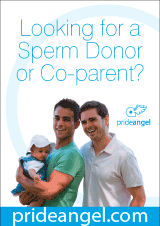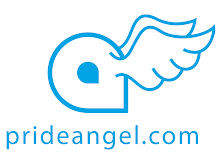Sperm donation is a topic that makes some people uncomfortable. For me,
any qualms about discussing sperm vanished when I began producing a
documentary about donor-conceived adults for the ABC. Sperm became a
constant topic of conversation as we tried to unpack why in the past,
sperm donation was anonymous and shrouded in secrecy.
In making our film Sperm Donors Anonymous we are hoping to reach the thousands of men who donated sperm anonymously and say: please watch these stories of children conceived with anonymous sperm. Many are growing into adults, finding out the truth about their conception, and many would like to know about their biological fathers. They have a right to know.
Laws need to be passed in Australia giving them this right. It’s time to put an end to the secrecy and the lack of openness that has surrounded donor-conception. Anonymity is a flawed process causing distress and grief for children, parents and sperm donors themselves.
When we started our project, director Lucy Paplinska and I made contact with sperm donors and donor-conceived adults through the Victorian Assisted Reproductive Treatment Authority (Varta).
We met Michael Griffiths, 40, a musical theatre performer who, at 28, found out by accident that he was donor-conceived when he read it in his mother’s unpublished autobiography. This revelation had a profound impact on him, causing a great deal of soul searching. Unfortunately, Michael was conceived in South Australia where many donor records were deliberately destroyed, but he was determined to discover his donor’s identity to complete the picture of his own identity.
At a group meeting in Melbourne, we met Ian Smith, a donor from the Madmen (Melbourne Anonymous Donors). Ian spoke about how he felt for the seven children he had fathered but never met. He and other donors at the meeting revealed a side to this story we hadn’t heard before. Here were guys who donated sperm more than 30 years ago, who at the time of donating thought little about “offspring”. But now they were open to contact, and in doing so, were supporting the donor-conceived people they knew who were fighting for the right to identifying information about their donor.
Lucy and I often asked ourselves what the fertility doctors who used anonymous sperm for almost 40 years were thinking. But it is estimated that the majority of the 60,000 donor-conceived people in Australia don’t know they are donor-conceived. Their parents haven’t told them, the clinics won’t tell them, and it’s not recorded on their birth certificates.
The clinics, in order to get on with the business of creating babies for infertile couples, made a decision in the 1970s that anonymous sperm donation was the only way society could deal with this new fertility treatment. This plan works as long as children don’t find out they are donor-conceived, and parents can shoulder the burden of keeping their secret.
Ross Hunter, who we also met in Melbourne, found out he was donor conceived at age 33. He wants to find his donor but his conception records are still to be located and his donor is not on a voluntary register or DNA database. Along with a group of other donor conceived folk, Ross started a campaign called RUDC? (Are you donor conceived?), encouraging children to ask their parents this question. But encouraging kids to ask also means encouraging parents to tell the truth. Parents are more likely to do this if they think their children will be able to find their donor.
The research to date isn’t conclusive on how many donors are open to contact. However it’s clear from our research that many donors are open to contact. We were fortunate two of our participants located their donors during filming and both were open to contact.
We followed Michael Griffiths as he returned to Adelaide looking for information about his donor. One donor came forward after reading a newspaper article but wanted to remain anonymous to Michael until a DNA test could prove paternity. A few weeks later, I went to visit the donor to ask if he would participate in our documentary.
I discovered he donated as a student. Seeing Michael’s face in a newspaper sent a jolt through him and he became determined to find out about the children he had fathered. He rang and emailed everyone he could think of – clinics, government, doctors. He showed me the file he kept tracking the correspondence; it was huge.
Here was a man coming to terms with the fact that he had children out there. He was willing to do a DNA test and go on a register, but no organisation in South Australia would facilitate a test, or give him information. When he told me his family was very musical (Michael is a singer and pianist), it was hard to hold back the tears. I could see clearly that the power of biological connection was going both ways, it wasn’t just the children who had a need to know.
Victorian clinics like Monash IVF now write to donors when requested by their biological children, as they have kept identity profiles. Some donors reject contact, and when they do, the clinic cannot give the children any identifying information. This rejection is painful. I know that making contact and handing over identifying information isn’t what anonymous donors signed up for, but there are real children out there.
I stayed in contact with the anonymous donor in Adelaide, and through the process of his DNA test with Michael. While waiting for the results of the test, he was on tenterhooks. He said he felt like an expectant father waiting for the birth of a child.
Article: 17th August 2015 www.theguardian.com
In making our film Sperm Donors Anonymous we are hoping to reach the thousands of men who donated sperm anonymously and say: please watch these stories of children conceived with anonymous sperm. Many are growing into adults, finding out the truth about their conception, and many would like to know about their biological fathers. They have a right to know.
Laws need to be passed in Australia giving them this right. It’s time to put an end to the secrecy and the lack of openness that has surrounded donor-conception. Anonymity is a flawed process causing distress and grief for children, parents and sperm donors themselves.
When we started our project, director Lucy Paplinska and I made contact with sperm donors and donor-conceived adults through the Victorian Assisted Reproductive Treatment Authority (Varta).
We met Michael Griffiths, 40, a musical theatre performer who, at 28, found out by accident that he was donor-conceived when he read it in his mother’s unpublished autobiography. This revelation had a profound impact on him, causing a great deal of soul searching. Unfortunately, Michael was conceived in South Australia where many donor records were deliberately destroyed, but he was determined to discover his donor’s identity to complete the picture of his own identity.
At a group meeting in Melbourne, we met Ian Smith, a donor from the Madmen (Melbourne Anonymous Donors). Ian spoke about how he felt for the seven children he had fathered but never met. He and other donors at the meeting revealed a side to this story we hadn’t heard before. Here were guys who donated sperm more than 30 years ago, who at the time of donating thought little about “offspring”. But now they were open to contact, and in doing so, were supporting the donor-conceived people they knew who were fighting for the right to identifying information about their donor.
Lucy and I often asked ourselves what the fertility doctors who used anonymous sperm for almost 40 years were thinking. But it is estimated that the majority of the 60,000 donor-conceived people in Australia don’t know they are donor-conceived. Their parents haven’t told them, the clinics won’t tell them, and it’s not recorded on their birth certificates.
The clinics, in order to get on with the business of creating babies for infertile couples, made a decision in the 1970s that anonymous sperm donation was the only way society could deal with this new fertility treatment. This plan works as long as children don’t find out they are donor-conceived, and parents can shoulder the burden of keeping their secret.
Ross Hunter, who we also met in Melbourne, found out he was donor conceived at age 33. He wants to find his donor but his conception records are still to be located and his donor is not on a voluntary register or DNA database. Along with a group of other donor conceived folk, Ross started a campaign called RUDC? (Are you donor conceived?), encouraging children to ask their parents this question. But encouraging kids to ask also means encouraging parents to tell the truth. Parents are more likely to do this if they think their children will be able to find their donor.
The research to date isn’t conclusive on how many donors are open to contact. However it’s clear from our research that many donors are open to contact. We were fortunate two of our participants located their donors during filming and both were open to contact.
We followed Michael Griffiths as he returned to Adelaide looking for information about his donor. One donor came forward after reading a newspaper article but wanted to remain anonymous to Michael until a DNA test could prove paternity. A few weeks later, I went to visit the donor to ask if he would participate in our documentary.
I discovered he donated as a student. Seeing Michael’s face in a newspaper sent a jolt through him and he became determined to find out about the children he had fathered. He rang and emailed everyone he could think of – clinics, government, doctors. He showed me the file he kept tracking the correspondence; it was huge.
Here was a man coming to terms with the fact that he had children out there. He was willing to do a DNA test and go on a register, but no organisation in South Australia would facilitate a test, or give him information. When he told me his family was very musical (Michael is a singer and pianist), it was hard to hold back the tears. I could see clearly that the power of biological connection was going both ways, it wasn’t just the children who had a need to know.
Victorian clinics like Monash IVF now write to donors when requested by their biological children, as they have kept identity profiles. Some donors reject contact, and when they do, the clinic cannot give the children any identifying information. This rejection is painful. I know that making contact and handing over identifying information isn’t what anonymous donors signed up for, but there are real children out there.
I stayed in contact with the anonymous donor in Adelaide, and through the process of his DNA test with Michael. While waiting for the results of the test, he was on tenterhooks. He said he felt like an expectant father waiting for the birth of a child.
Article: 17th August 2015 www.theguardian.com



No comments:
Post a Comment